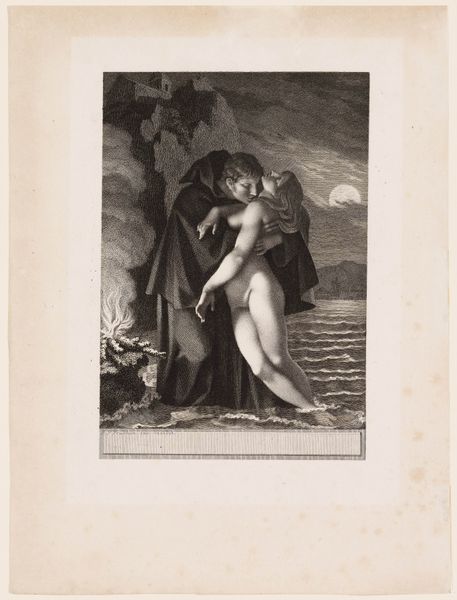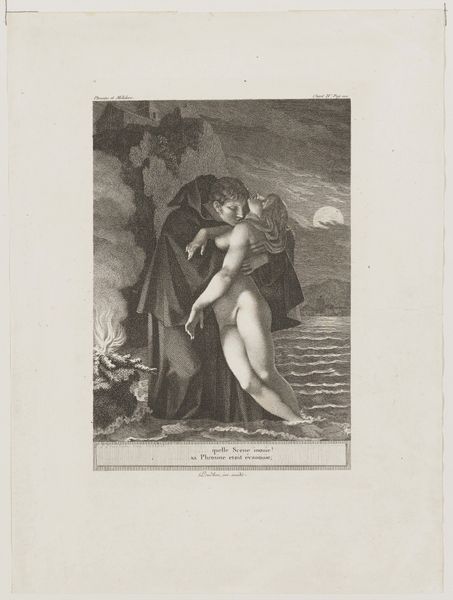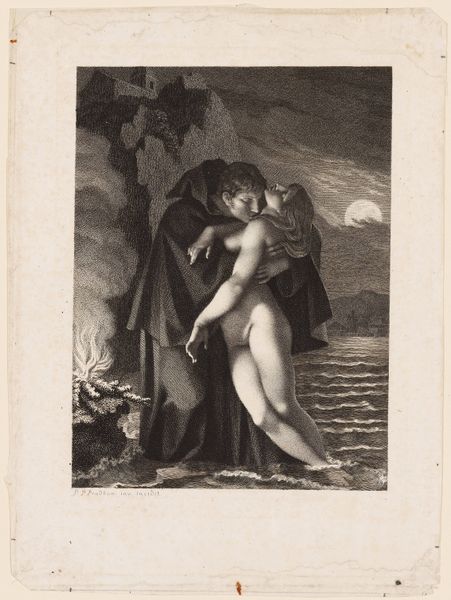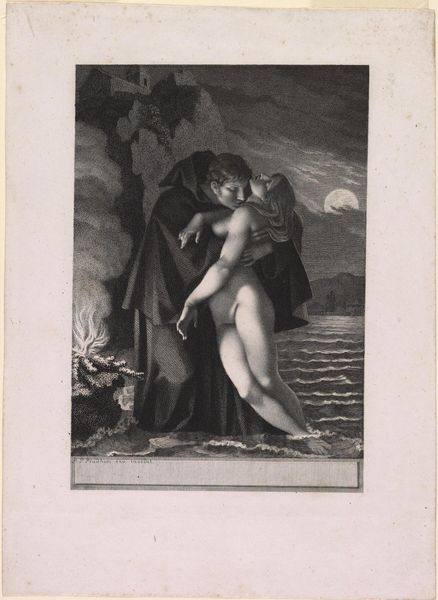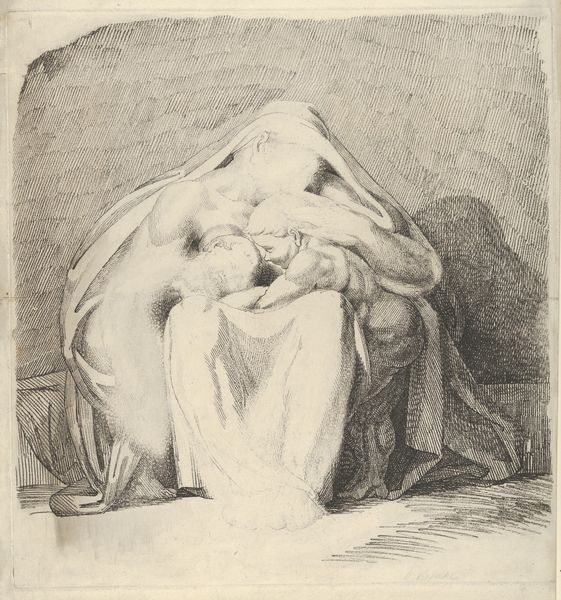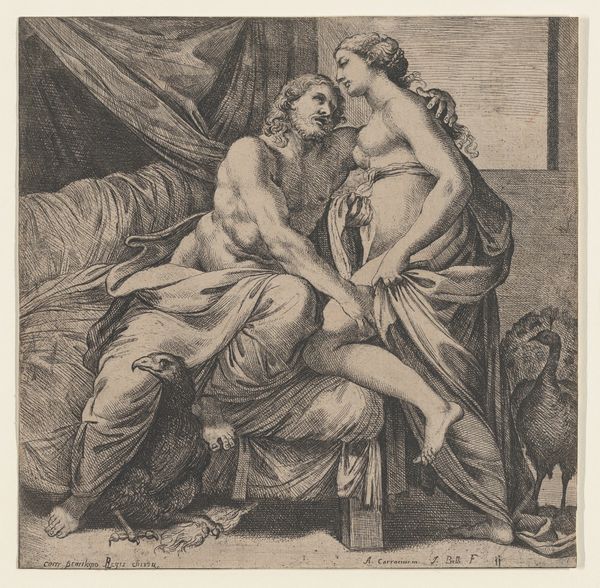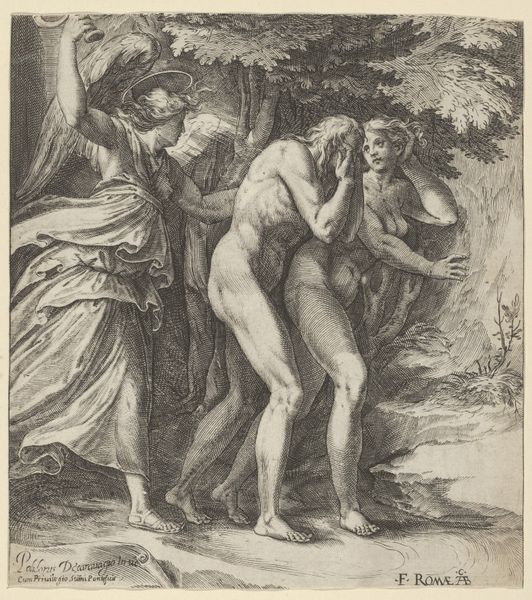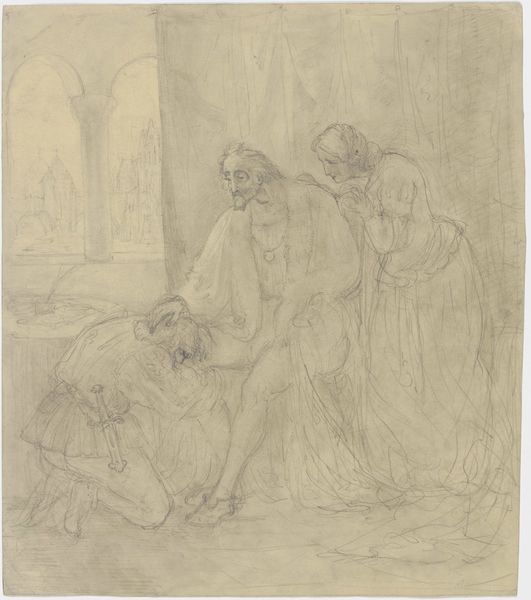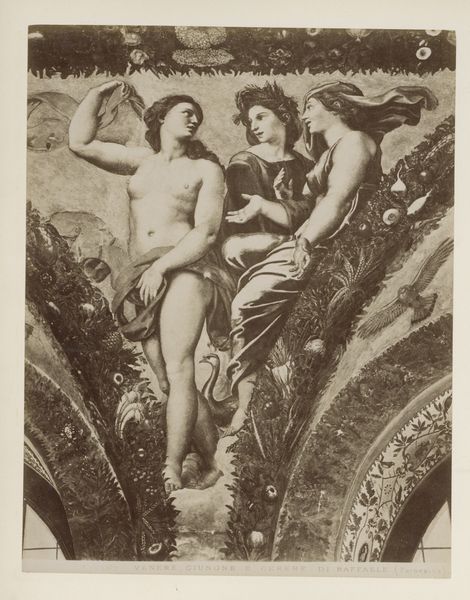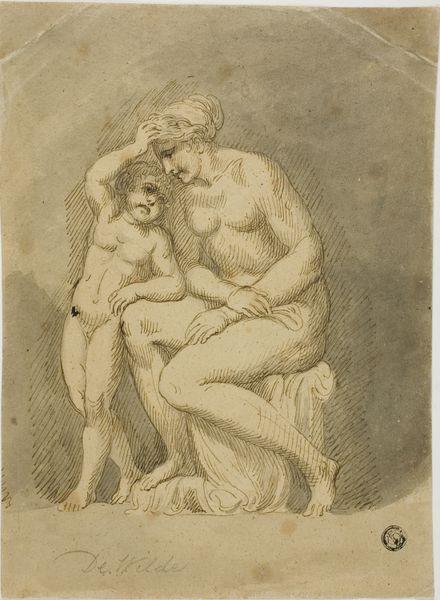
drawing, chalk, charcoal
#
drawing
#
landscape
#
figuration
#
romanticism
#
chalk
#
charcoal
#
history-painting
Copyright: Public Domain
Curator: This touching drawing is by Johann Heinrich Hasselhorst and is titled "Hagar and Ishmael." Editor: My first impression is of desolation. There's such an immense sense of abandonment conveyed through the landscape and the postures of the figures. The charcoal and chalk give it a soft, almost dreamlike quality, but the subject is undeniably harsh. Curator: It's a scene taken from Genesis, a story loaded with complex themes of expulsion and divine promises. Hasselhorst has captured the moment where Hagar, cast out into the desert with her son Ishmael, is overcome with despair. Editor: Considering its historical context, what sociopolitical influences can we examine regarding its representation? Hagar's narrative can be understood through modern discourse, considering her identity and place. The expulsion of Hagar and Ishmael reflects narratives of displacement that we continue to grapple with today. It challenges notions of legitimacy within patriarchal systems, highlighting the precarity of those who exist outside conventional structures of power. Curator: I agree that it's interesting to analyze how social norms impact Hagar's plight. Looking at Hasselhorst's portrayal of this, it's evident he's working within the Romantic tradition. There is an emphasis on evoking an emotional response from the viewer. Think about the dramatic lighting, for instance. It guides your eye to the key figures. Editor: Precisely. But how does the choice of representing Hagar as an archetypal, submissive figure—covering her face in despair—perpetuate certain stereotypes? Her agency is seemingly absent; her identity reduced to suffering. This romanticized version minimizes the real political dimensions of Hagar's struggle and her significance in questioning power structures. Curator: But could it be argued that Hasselhorst aims to garner empathy for Hagar through the vulnerability he portrays? I think it highlights the very real anxieties of social rejection. This composition focuses on motherhood and loss, which might invite diverse audiences to relate and perhaps challenge existing norms. Editor: I think that, despite good intentions, focusing predominantly on Hagar's emotional state can risk overlooking her inherent resilience. When approaching this drawing, a discussion of those power dynamics is vital. How is the institution influencing the narrative surrounding female agency? Curator: Your emphasis on power systems reminds us that interpretations are subject to social dynamics. Editor: Indeed. Examining historical artworks allows for reflection. It asks important questions about society, visibility, and fairness within symbolic expression.
Comments
No comments
Be the first to comment and join the conversation on the ultimate creative platform.
